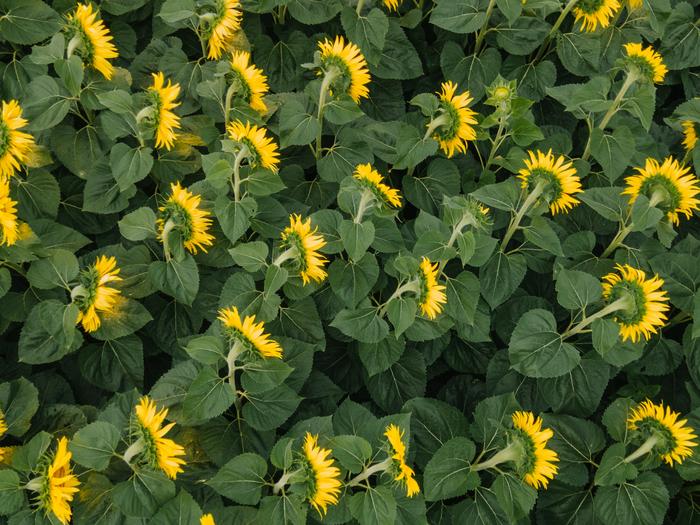A sunflower’s ability to track the sun east to west during the day, and to face east again before the next sunrise, relies on multiple types of photoresponses, according to a new study publishing October 31st in the open access journal PLOS Biology by Stacey Harmer and colleagues at the University of California Davis, US. The results deepen the understanding of this well-known plant behavior, and upend previous assumptions about its dependence on a canonical light-dependent response pathway.

Credit: Maksim Goncharenok, Pexels (CC0, https://creativecommons.org/publicdomain/zero/1.0/)
A sunflower’s ability to track the sun east to west during the day, and to face east again before the next sunrise, relies on multiple types of photoresponses, according to a new study publishing October 31st in the open access journal PLOS Biology by Stacey Harmer and colleagues at the University of California Davis, US. The results deepen the understanding of this well-known plant behavior, and upend previous assumptions about its dependence on a canonical light-dependent response pathway.
Because plants are rooted in place, they can’t get up and move when a neighbor blocks their light or they find themselves sprouting in a shady spot. Instead, they rely on growth or elongation to maneuver toward the light. There are several molecular systems to facilitate such responses, the best-known of which is called the phototropic response. In this system, blue light falling unevenly on a seedling is sensed by proteins called phototropins, which cause redistribution of a plant hormone, ultimately causing the growing tip to bend toward the light.
Whether the sun-tracking ability of the sunflower, called heliotropism, is a form of phototropic response, involving the same receptors and hormone, has not been clear. To explore this question, the authors compared gene activity patterns of sunflowers bending toward blue light in the lab to sunflowers tracking the sun in the field.
Surprisingly, only a few of the genes whose rapid upregulation is responsible for the phototropic bending in the lab showed significant differences in activity in response to the movement of the sun. Along with these few, they found changes in other light-response systems, including a shade avoidance system that senses far-red light (enriched in shade), which was triggered on the west side of the sunflower stem early in the day, when the sun is in the east. But, complicating the picture further, they showed that depletion of either red and far-red or blue light had little effect on the sunflower’s ability to track the sun, suggesting that multiple systems may coordinate to produce the heliotropic response, allowing it to operate even in the absence of one or more light triggers.
Harmer adds, “We’ve been continually surprised by what we’ve found as we study how sunflowers follow the sun each day. In this paper, we report that they use different molecular pathways to initiate and maintain tracking movements, and that the photoreceptors best known for causing plant bending seem to play a minor role in this remarkable process.”
#####
In your coverage, please use this URL to provide access to the freely available paper in PLOS Biology: http://journals.plos.org/plosbiology/article?id=10.1371/journal.pbio.3002344
Citation: Brooks CJ, Atamian HS, Harmer SL (2023) Multiple light signaling pathways control solar tracking in sunflowers. PLoS Biol 21(10): e3002344. https://doi.org/10.1371/journal.pbio.3002344
Author Countries: United States
Funding: This work was supported by grants from the National Science Foundation (1238040 and 1759942) and the National Institute of Food and Agriculture (CA-D-PLB-2259-H) to SLH. The funders had no role in study design, data collection and analysis, decision to publish, or preparation of the manuscript.
Journal
PLoS Biology
DOI
10.1371/journal.pbio.3002344
Method of Research
Experimental study
Subject of Research
Not applicable
COI Statement
Competing interests: The authors have declared that no competing interests exist.




